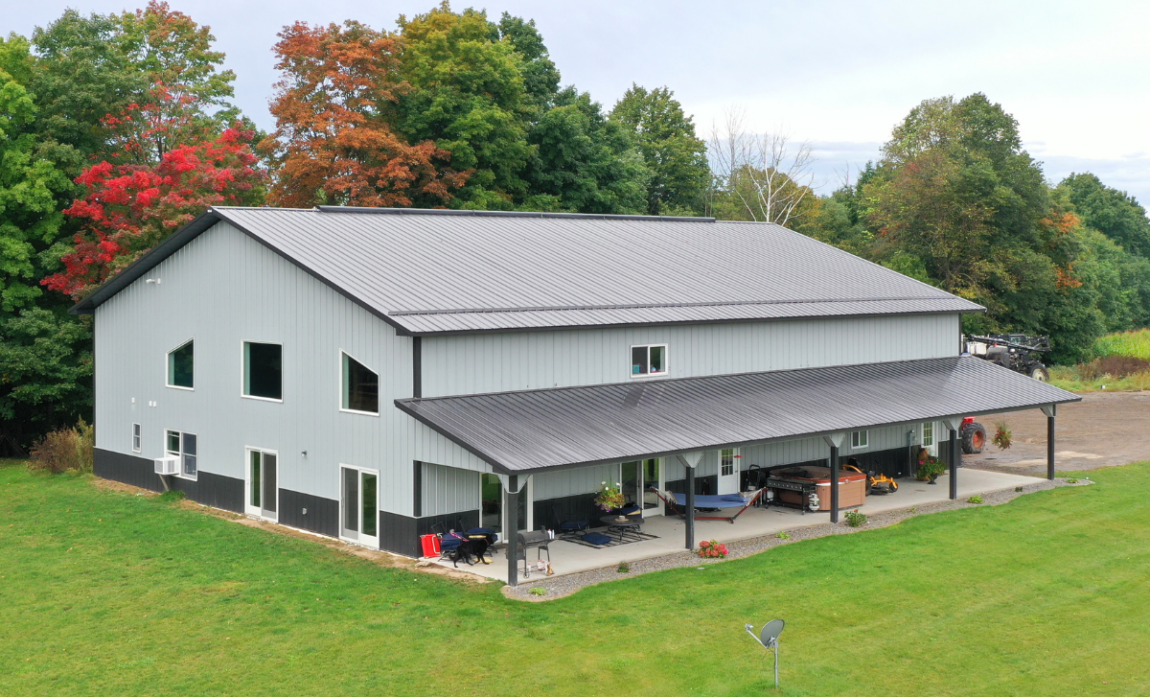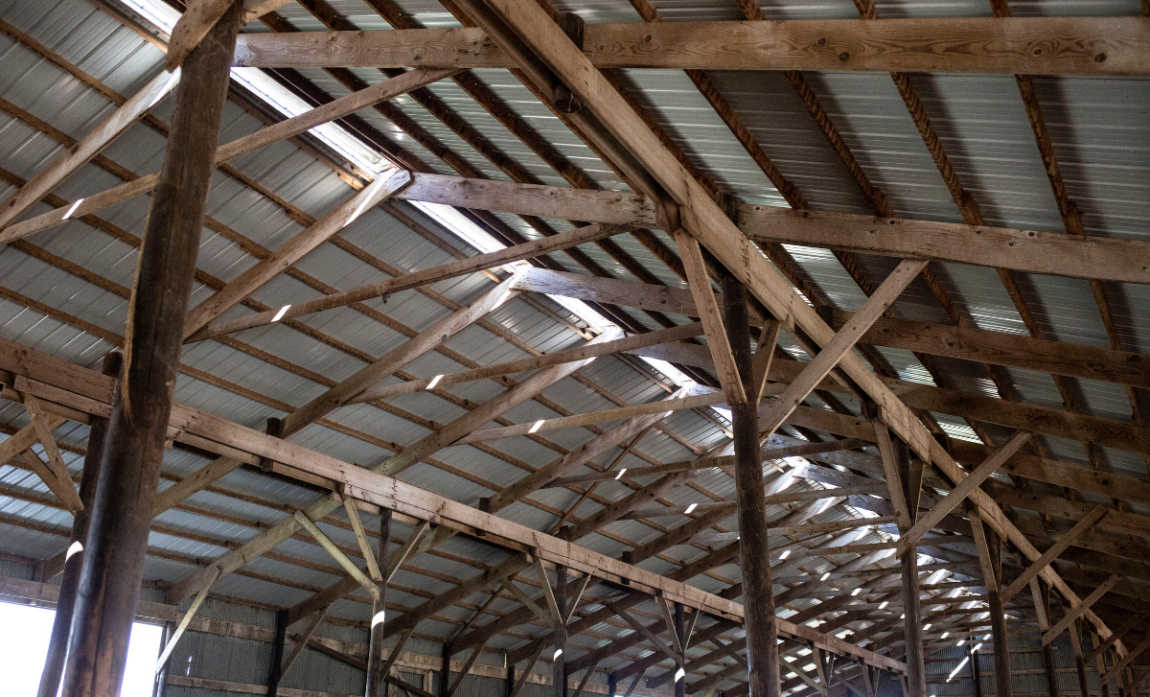It’s worth the investment to ventilate your animal barn properly to safeguard indoor air quality. Like all good health management practices, it can even prolong the life of your animals. Here are some tips on how to ventilate your animal pole barn to maintain high air quality.
The higher the air quality in your pole barn, the healthier and more efficient your animals will be. There are three types of ventilation: natural, powered and a hybrid of both. Here, we offer tips on how to best manage each to ensure optimal airflow for your cattle, horses, chickens, pigs or any livestock.
But first, let’s go over some general tips that apply to properly ventilating all animal barns.
* Clean your animal space very well. If you can’t clean your building regularly, it will eventually lead to poor air quality. That’s why it’s important to design your animal confinement space so you can easily move cleaning equipment in and out.
* Consider a high roof pitch. The higher your roof pitch, the more likely stale air will exhaust through the peak, and fresh air will come through the eaves of your barn, which enhances air quality.
This is especially important for naturally-ventilated barns — we recommend a 4/12 or 5/12 pitch.
* Include overhangs in your building design. Overhangs serve two purposes.They allow for vented eaves — which allow fresh air to enter the building — and they keep rainwater and snow away from your building.
If you poorly manage rainwater or snow, it can impact the moisture inside your barn and the air your animals breathe.
Natural Ventilation
When it comes to natural ventilation, there’s no mechanical supplements — no fans, no tunnels, no operational costs. That’s what makes it the least expensive.
Natural ventilation is most typically found in northern climate barns, like the upper Midwest and Great Lakes, where the summers aren’t brutally hot.
Although winters may be bone-chilling cold, if you install insulation and operate waste management efficiently (more below), your barn will retain enough heat and good air for your animals to survive and even thrive.
* Place paths for air to flow through the sides and entrance of your building. Install doors, windows, curtains and eave ventilation to let air in and flow through the building, and ridge ventilation at the top of the building where air can exit out through natural convection.
* Orient your building in the right direction. Try to place your building in higher areas where the wind is most robust.
Keep in mind that winds prevail from the southwest in the summer and from the northwest in the winter. We advise our customers to strike a “happy medium” to ensure airflow during all seasons.
* Insulate properly. Insulation helps to protect the inside environment from temperature extremes, and also supports air quality. Remember to insulate your roofline to maintain optimal temperatures inside your building.
Power Ventilation
When it comes to power ventilation, people ask: “If I’m going to spend the extra dollars, what’s the payback?”
If you have a mechanically-ventilated building, you’re going to have better animal production efficiency because you will have more control over the ventilation and indoor air quality.
And It will significantly improve the health of your animals, especially if you live in a climate where summers are uncomfortably hot and humid.
However, your power-ventilated building needs to be managed properly. If not, its performance may not be as great as you anticipated.
* Combine features to suit your needs. There are several options to power ventilation: tunnel ventilation, which is typically operated by a thermostat and timing controls; intermittent fans that may sit in the peak or along a side wall; and mechanically-operated intake shutters.
Talk to your builder about which combination is best for your geographical location and climate.
* Consider intermittent baffles. These allow the air to remain at a low elevation, making tunnel-ventilated buildings more efficient; this will help place the air directly where you want it: to cool the animal, and pick up and remove moisture.
Hybrid Ventilation
Hybrid buildings use some mechanical ventilation augmentations and some natural — not just one or the other. For instance, you would use natural ventilation for part of the year, until you hit the heat of the summer, when a fan-operated system is utilized.
Ventilating your building is a very strategic process that needs to be done properly. Talk to your builder for an expert’s opinion about which ventilation approach is best for you.







